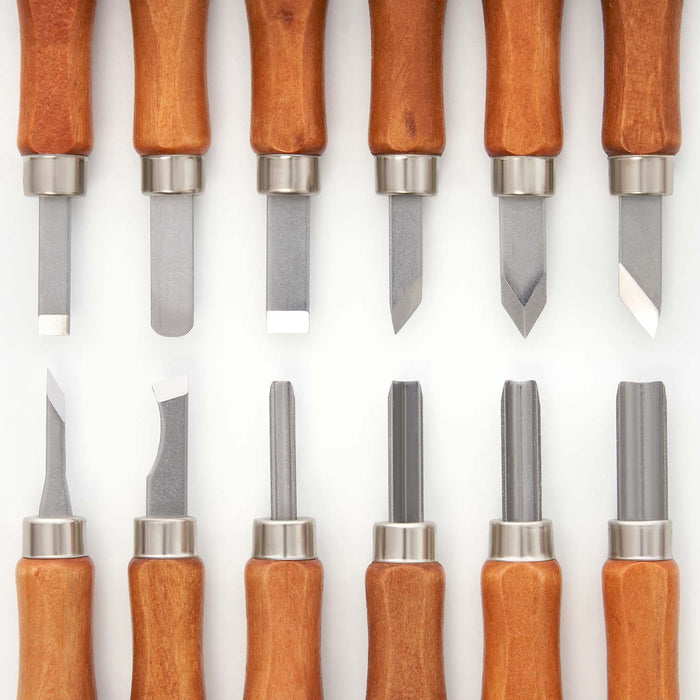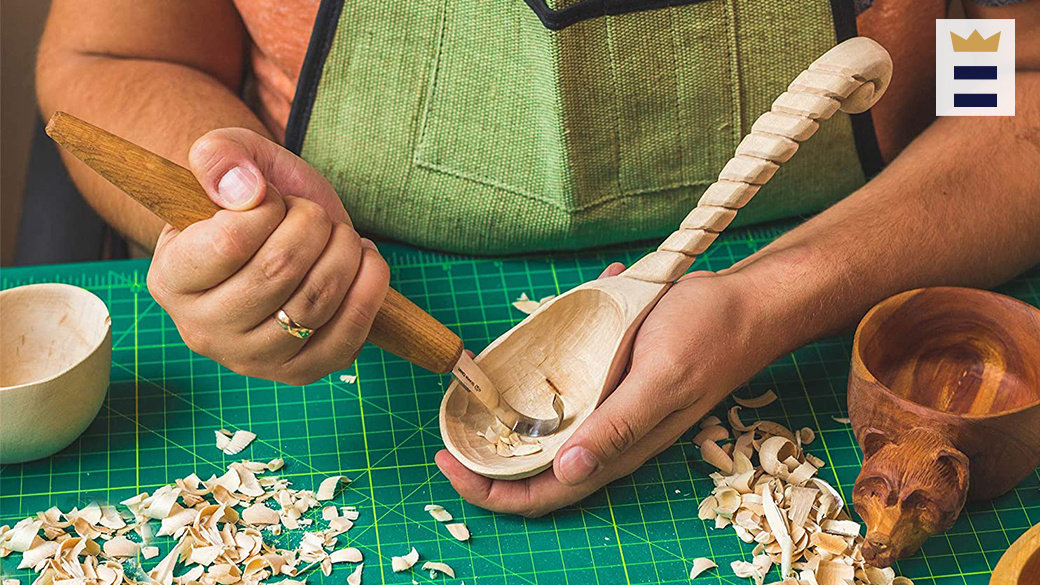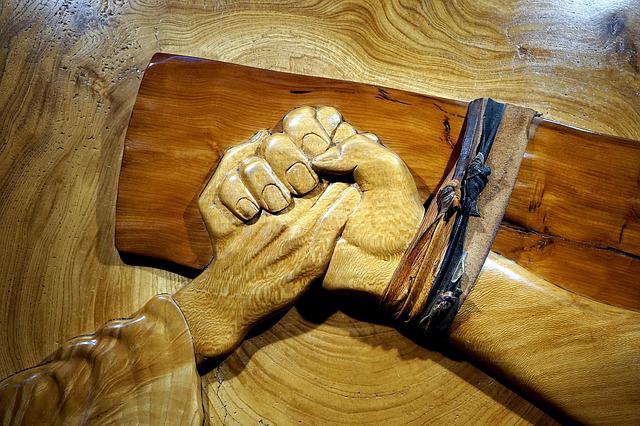
You can find several videos on woodcarving online. People enjoy watching Ian's videos because they show the techniques step by step. His videos are available as downloadable video files. Plans and photographs are also included. All buyers must be able view MPG videos as well as JPG images. In addition to his video tutorials, he also has books available that teach you how to carve various materials. Ian Norbury has one example: The Fundamentals of Woodcarving.
Woodcarving basics
A fundamentals class is a good idea for anyone new to woodcarving. This class will show you how to carve and it is tailored to your experience level. Before diving into advanced woodcarving techniques, you will be taught about safety, woodworking tools, wood finishes, and basic woodcarving skills. You will be able to carve a human head, an eagle, and Christmas ornament. Learn about grain direction and how to cleanly remove wood.
Woodcarving classes might be a good option if your desire to carve flowers and fruits is strong. It's not difficult to learn the fundamentals if you have a natural talent for the craft. No matter your skill level, you will learn the design process and techniques in a relaxed and fun environment. An experienced woodcarver can tell that you can learn woodcarving by working with a teacher.
Ian Norbury
Ian Norbury's videos on woodcarving are like watching a master carver from above. Each video shows the steps involved in carving, and the techniques he's used over the past fifty years. In addition to his detailed instruction, these videos are offered free of charge, and even come with a money-back guarantee. You can download them anytime, anywhere and as many times as necessary.
The DVD can be used as a reference tool or as a training aid. You will find step-by–step instructions and clips from Ian Carving in the videos. This way, you can see the entire process from start to finish. Ian's teaching method is also easy to follow, and he shows you how to carve a harlequin, or depict a character from a myth. You have over two hours worth of instructional videos that will help you improve your technique.
Frank Russell

Frank Russell's woodcarving videos are great for beginners or intermediate carvers. His techniques cover a variety of subjects, including woodcarving animals, birds, and plants. He also shows how to shape and clean bits. These videos include both the actual carving process and visual concepts. Frank Russell's videos available online and on DVD. Fur, Feathers, Fins are a complete guide for carving birds and animals.
Frank Russell's woodcarving videos make excellent resources for both beginner and experienced carvers. These videos contain detailed step-by-step instructions for beginners and tips for advanced carvers. They're filmed with Foredom Woodcarving Kits and feature a variety of tools, including Typhoonburs and CeramCut Blue abrasive points. There is also a Cotton Tail Rabbit carving tutorial.
Scott Phillips
Scott Phillips videos on woodcarving will give you more information. The PBS show, "American Woodshop," features Scott and his woodcarving skills. Scott shares his woodcarving journey, including the time when he used his father’s walnut boards. He also discusses how his love of baseball inspired his first jewelry box. In addition to his woodcarving videos, Scott has written a book on the history of the shuttle program and will also chronicle the history of the program in his upcoming book "Remove Before Flight." Although his woodcarving career has taken flight, he still occasionally builds other types of furniture, including clocks and Adirondack chairs.
Kevin Coates

If you enjoy carving, you may want to check out some Kevin Coates woodcarving videos. His YouTube channel has nearly seven million views and more than 26,000 subscribers. Many carvers are inspired by his videos to create woodcarving videos. You can watch them to see how you can carve your own piece. These videos show carvings by Kevin Coates, as well as other well-known carvers. Look no further if you are looking for inspiring carving videos.
FAQ
Which material would you recommend for woodworking lessons?
Start with softwoods, such as pine or poplar. After you are comfortable with the softwoods, move to hardwood.
Where can you buy hardwood lumber?
Home Depot can sell hardwood lumber. You will find a range of wood products available at Home Depot.
A wide range of engineered hardwoods are also available, such as Ipe and Brazilian Cherry (Pau d'Arco), Mahogany and Swietenia Macrophylla.
You can find these woods for sale online by searching "hardwood lumber" on Google.
Is it necessary to be a genius in woodworking to succeed?
No. Woodworking is not rocket science. It is possible to learn basic tools and techniques that will allow you to create beautiful art.
Statistics
- Overall employment of woodworkers is projected to grow 8 percent from 2020 to 2030, about as fast as the average for all occupations. (bls.gov)
- Woodworkers on the lower end of that spectrum, the bottom 10% to be exact, make roughly $24,000 a year, while the top 10% makes $108,000. (zippia.com)
- If your lumber isn't as dry as you would like when you purchase it (over 22% in Glen Huey's opinion…probably over 10-15% in my opinion), then it's a good idea to let it acclimate to your workshop for a couple of weeks. (woodandshop.com)
- The U.S. Bureau of Labor Statistics (BLS) estimates that the number of jobs for woodworkers will decline by 4% between 2019 and 2029. (indeed.com)
External Links
How To
How to stain wood
Staining wood can be described as a process where chemicals are applied to the wood surface. This causes the wood to take on a new color. This chemical reaction causes the wood to change from white to brownish red. Although oak is the most popular type of wood to stain, there are many other types that can be used.
There are several ways to apply stains to wood surfaces. You can mix the stain with a solvent, such as turpentine, and spray it onto the wood. Some methods involve a mixture of water and dye that is applied directly to the wood. The stain can be mixed with paints and varnishes to become part of the final coating.
Preparing your wood for staining is the first thing to do. Clean the wood to get rid of any grease, dirt or other substances that might be detrimental to the stain's application. Sanding smoothens any scratches or rough spots. The next step is to determine the type of stain you would like to use. There are two main kinds of stains available: non-penetrating stains and penetrating. Penetrating colors penetrate deeper into wood than those that are non-penetrating. This makes them more suitable for darker colors, such as mahogany. Light colors such as maple work well with non-penetrating stain.
You will need to decide on the type of stain you want to use, and then prepare your tools. A paintbrush works well for applying stains because it allows you to spread the liquid evenly across the surface. To remove any stains left behind after painting, you will need some rags. If you plan on mixing the stain yourself make sure that you have enough containers to hold the different components.
After you have prepared your materials for staining, clean the area. Use warm water and soap to clean away dirt and dust. Use a dampened sponge and warm water to clean the entire piece. You should remove any debris, especially if your plan is to stain darker wood.
Apply the stain. Start at one end of the piece of furniture and brush or spray the stain onto the wood. You should work slowly and carefully. Continue moving along the grain until you reach your opposite end. You must be careful not to allow the stain to drip off the wood's edges. Before proceeding to the next step, let the stain dry thoroughly.
To protect the painted surface, apply a coat of clear polyurethane sealant. Apply three coats with polyurethane. Let the third coat dry overnight before you sand the final coat.